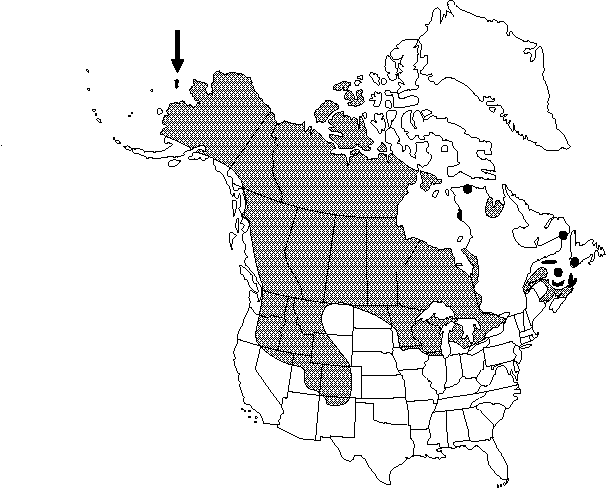Difference between revisions of "Ranunculus gmelinii"
Syst. Nat. 1: 303. 1817.
FNA>Volume Importer |
FNA>Volume Importer |
(No difference)
| |
Revision as of 22:16, 16 December 2019
Stems prostrate or sometimes floating, glabrous or hirsute, rooting nodally. Leaves: basal leaves absent, cauline leaf blades reniform to circular, 3-parted, 0.6-6.5 × 1.1-9 cm, base cordate, segments again 1-3×-lobed to -dissected, margins entire or crenate, apex rounded to filiform. Flowers: receptacle sparsely hispid; sepals 4-5, spreading or reflexed from base, 2-5 × 2-4 mm, glabrous or sparsely pilose; petals 4-14, 3-7 × 2-5 mm; nectary scale variable, crescent-shaped, funnel-shaped, or flaplike; style 0.2-0.4 mm. Heads of achenes globose or ovoid, 3-8 × 3-7 mm; achenes 1-1.6 × 1-1.2 mm, glabrous; beak narrowly lanceolate or filiform, 0.4-0.8 mm. 2n = 16, 32, 64.
Phenology: Flowering spring–summer (May–Sep).
Habitat: Shallow water or drying mud, wet meadows, swamps, marshes, ponds, shores of rivers
Elevation: 0-2800 m
Distribution

Alta., B.C., Man., N.B., Nfld., N.W.T., N.S., Ont., P.E.I., Que., Sask., Yukon, Alaska, Colo., Idaho, Ill., Iowa, Maine, Mich., Minn., Mont., Nev., N.Mex., N.Dak., Oreg., Utah, Wash., Wis., Wyo., Eurasia.
Discussion
Ranunculus gmelinii has been divided into varieties on the basis of indument and flower size. These characters are variable and poorly correlated with one another, however, and these varieties scarcely seem natural.
Selected References
None.